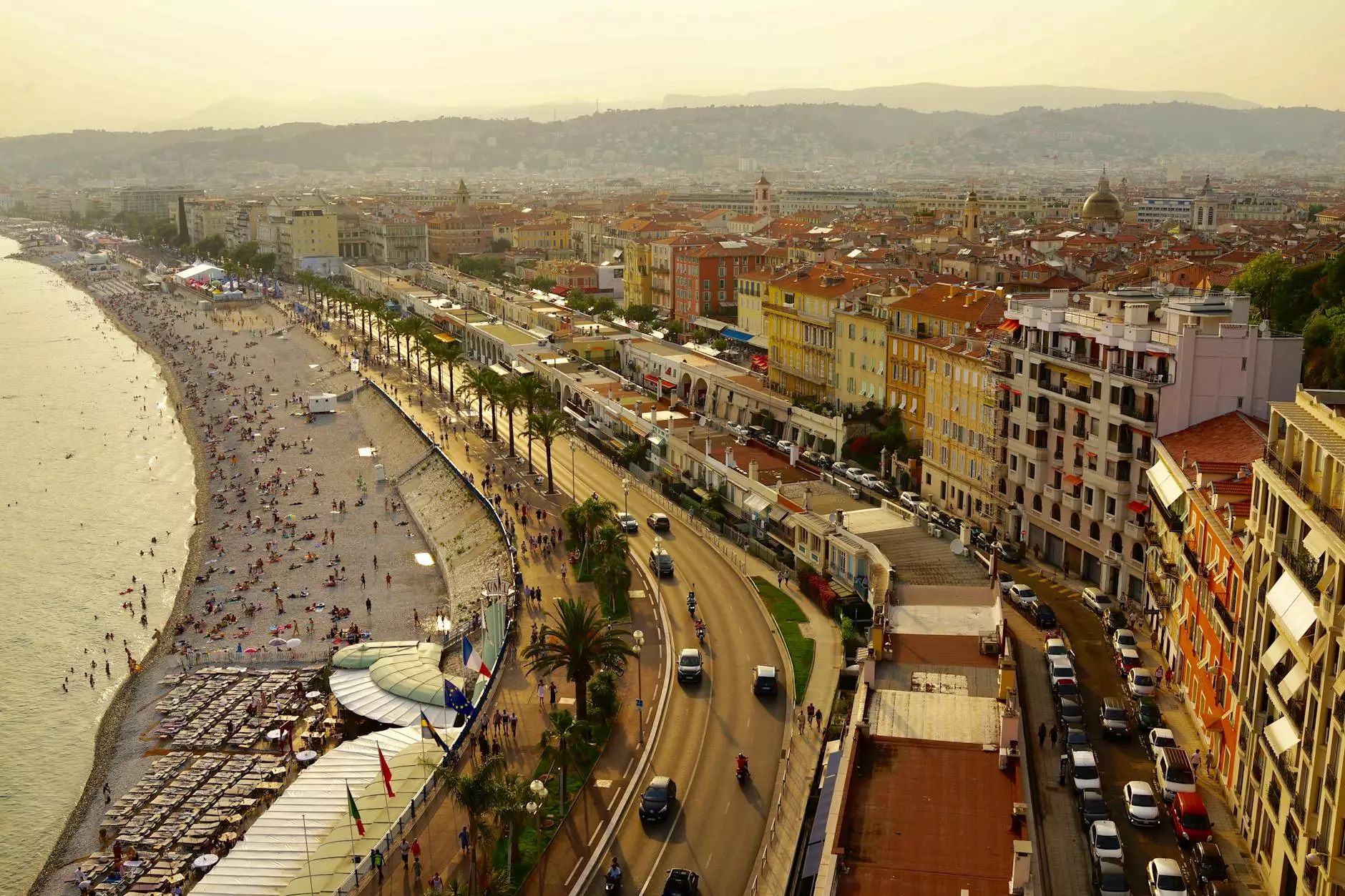The Transformative Power of Site-Specific Light Art

Site-specific light art is an innovative and captivating form of artistic expression that combines light, space, and environment to create immersive experiences. Artists across the globe are leveraging the unique qualities of light to redefine how we perceive and interact with our surroundings. In this article, we will delve deeply into the world of site-specific light art, explore its significance, and showcase the remarkable work of Grimanesa Amorós, an artist known for her masterful integration of light in public spaces.
Understanding Site-Specific Light Art
At its core, site-specific light art is about creating strong connections between artwork and its intended location. It transcends traditional art forms by directly engaging with the environment, utilizing elements like architecture, urban landscapes, and natural settings. Each installation is carefully designed with consideration of its surroundings, producing a harmonious dialogue between art and the locale. The language of light serves as both medium and message, transforming public and private spaces into spectacular spectacles.
Historical Context of Light Art
Light art has rich historical roots that date back to ancient civilizations, where fire and flickering torches illuminated rituals and gatherings. However, in contemporary art, light evolved into a medium of its own. The late 20th century marked a significant shift with artists like James Turrell and Olafur Eliasson, who began to explore artificial light alongside architectural concepts. This evolution paved the way for current artists like Grimanesa Amorós, who blend technology and creativity in their installations.
Key Characteristics of Site-Specific Light Art
What makes site-specific light art so unique? Here are some defining characteristics:
- Interactivity: Many light installations invite viewer interaction, creating dynamic experiences that change as people engage with the art.
- Environmental Context: The artwork is designed with the location in mind, enhancing architectural elements or reflecting cultural narratives.
- Temporal Quality: Light is ephemeral, creating a sense of urgency and appreciation as the installations often change throughout the day and night.
- Technological Integration: The use of advanced technology through LED lights, sensors, and projection mapping offers artists innovative ways to express their visions.
The Artistic Vision of Grimanesa Amorós
Grimanesa Amorós is a notable figure in the domain of site-specific light art. Her work not only captivates visually but also engages viewers emotionally and intellectually. Amorós, born in Peru and based in New York, uses her art to explore themes of identity, culture, and community engagement.
Her Signature Aesthetic
Amorós’s installations are renowned for their intricate designs that incorporate her background in sculpture with cutting-edge light technology. Many of her pieces draw inspiration from her Peruvian heritage, infusing cultural narratives into modern contexts. This merging of ancient and contemporary creates works that resonate with both local and global audiences.
Notable Installations
Throughout her career, Grimanesa Amorós has developed several notable projects that exemplify site-specific light art. Here are a few highlights:
- “Luminous Vortex”: This installation was showcased at the historic Fisher Center at Bard College. Utilizing hundreds of LEDs, it transformed spaces into a dazzling display of color and movement, engaging viewers as they moved through the area.
- “The Wave”: Installed in New York City, this piece focused on the interaction between light and water, creating rippling effects that blurred the lines between the urban landscape and nature.
- “In the Twilight”: A public installation that challenged notions of luminance and shadow, reflecting on themes of change and transition within New York’s vibrant setting.
The Impact of Site-Specific Light Art on Communities
Site-specific light art holds the power to transform not just physical spaces but entire communities. Here’s how such installations influence our social fabric:
Enhancing Public Spaces
By adorning often-overlooked areas with vibrant light art, artists can breathe new life into public spaces, making them more inviting and enjoyable for community members. Street corners, parks, and building facades become canvases for artistic expression, promoting social interaction and engagement.
Encouraging Cultural Dialogue
Amorós’s work often initiates discussions about cultural identity and belonging. By reflecting her heritage through modern light art, she encourages viewers to examine their cultural narratives, fostering a sense of unity and understanding among diverse communities.
Boosting Local Economies
The presence of impressive art installations, including site-specific light art, can attract tourism to an area. Cities often see an increase in foot traffic and, therefore, economic activity as people come to experience these captivating visual displays.
Creating Lasting Memories
Art has the ability to create emotional connections. The brilliance of light art can evoke a range of feelings from joy to reflection, leaving lasting impressions on viewers. This emotional response can be a key motivator for individuals to return to the space multiple times, both to experience the art and the atmosphere it cultivates.
Challenges in Site-Specific Light Art
Despite the many benefits, creating site-specific light art is not without its challenges:
Environmental Constraints
Artists must carefully consider environmental factors, including weather conditions, existing infrastructure, and safety regulations. Finding a balance between artistic vision and practical logistics is essential for successful installations.
Community Reception
Not all community members may immediately embrace new art installations. Artists must navigate the nuances of local culture and preferences, often engaging in dialogues to ensure their work resonates positively with residents.
The Future of Site-Specific Light Art
As technology continues to advance, the possibilities for site-specific light art are expanding exponentially. Future artists will have access to innovative tools and methods, such as augmented reality and interactive projections, allowing for even more engaging and transformative experiences.
Interdisciplinary Collaborations
We can expect an increase in collaborations between artists and professionals from different fields, such as urban planners, architects, and environmental scientists. Such partnerships can lead to holistic projects that not only beautify spaces but also address sustainability and community needs.
Conclusion
Site-specific light art is more than just a visual spectacle; it is a powerful medium that transforms how we relate to our environments. Through the work of visionary artists like Grimanesa Amorós, we witness the profound impact that art can have on public spaces. As we continue to explore the integration of art and technology, the future promises even more vibrant and meaningful expressions of creativity that engage and uplift communities.
Whether you are an art enthusiast, a community leader, or simply someone who appreciates the beauty of light, the world of site-specific light art offers a rich tapestry of experiences waiting to be explored. Join us on this journey and discover how light can illuminate not just spaces, but our very perceptions of art and community.









